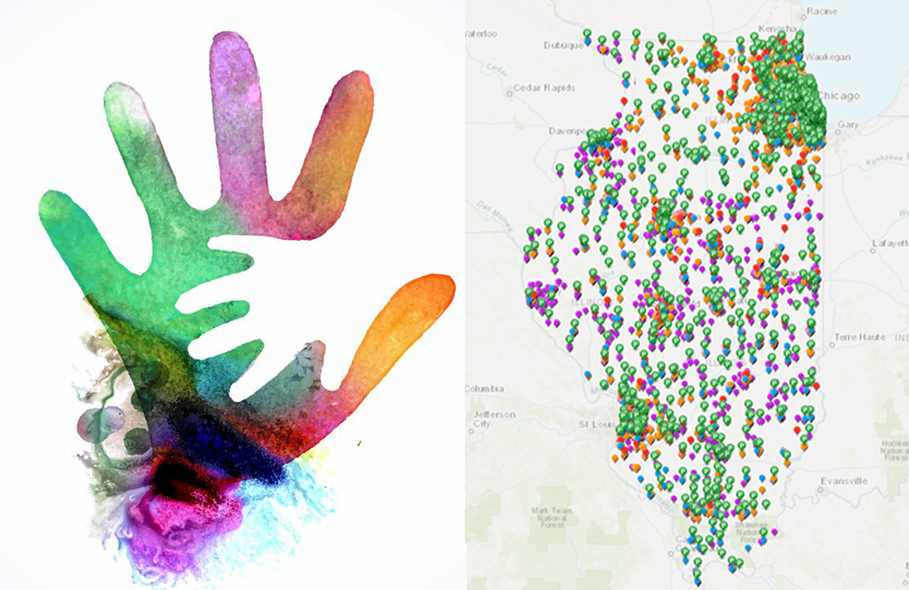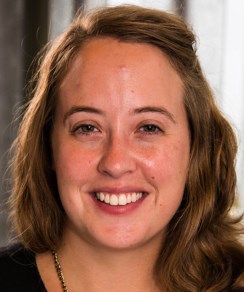IECAM: Turning Data Into Insight
by Tom Hanlon / Mar 16, 2021

IECAM helps state agencies understand the risks the state faces in early childhood well-being, and where those risks are not being adequately addressed. And that’s good news for the children of the state of Illinois.
IECAM—Illinois Early Childhood Asset Map—was created to provide early childhood data that state agencies and policymakers can translate into information to gain the insight they need to facilitate the appropriate allocation of resources and improve outcomes for children in Illinois.
Created in 2006 and housed at the University of Illinois Urbana-Champaign, IECAM has been a two-person operation for most of its existence, but in recent years has added staff to increase its output and effectiveness. Currently, IECAM is partnering with the Erikson Institute, a graduate school in child development, and Voices for Illinois Children, an advocacy group, to develop a new edition of the Illinois Risk and Reach Report. The report is a set of data tools that includes an interactive website of child well-being indicators in relation to family stability, health, and early care and education.
The first Risk and Reach Report came out in 2019. This new report will be out in late spring 2021.
The Interaction of Risk and Reach
“We know there’s a lot of risk out there,” says Dawn Thomas, IECAM director and co-principal investigator. “And we know there’s a lot of reach, in terms of early childhood programs. What we don’t know is how they interact together.”
 The data comes from a variety of sources, Thomas says: the Illinois Department of Public Health, the Illinois Department of Human Services, the US Census Bureau, the Illinois State Board of Education, and more. “Really anywhere that holds data, we will try to get,” she says. The risk and reach report combines the data in composite indices and mapping, Thomas notes, to show, county by county, the reach vs. the risk.
The data comes from a variety of sources, Thomas says: the Illinois Department of Public Health, the Illinois Department of Human Services, the US Census Bureau, the Illinois State Board of Education, and more. “Really anywhere that holds data, we will try to get,” she says. The risk and reach report combines the data in composite indices and mapping, Thomas notes, to show, county by county, the reach vs. the risk.
“What makes our report different from other states’ risk and reach reports is we are not only looking at the risks and the reaches provided, but also at what the state is saying they are providing in fiscal monies,” Thomas says.
IECAM is a National Leader in Early Childhood Data
“IECAM has the infrastructure and the expertise that Erikson is looking for with this project,” says Catherine Corr, co-principal investigator and assistant professor in Special Education at the College of Education. “Our infrastructure positions us in a way that no other state is, in terms of early childhood data. We’ve been able to set the stage for other states to think about why collecting data on a statewide basis is really important, particularly around early childhood.”
 As for the state of Illinois, IECAM gives policymakers and other stakeholders in Chicago a greater understanding of what the situation is downstate, Corr adds. “We’ve been able to bring visibility to the whole state,” she says.
As for the state of Illinois, IECAM gives policymakers and other stakeholders in Chicago a greater understanding of what the situation is downstate, Corr adds. “We’ve been able to bring visibility to the whole state,” she says.
“And we’re helping state agencies build their own capacity in knowing their own data,” Thomas says. The organization provides ongoing technical assistance and runs computer labs showing agencies how to use data, and helps agencies make data-based decisions during the pandemic. “We’ve been collecting data so long on these systems and programs that we’re in a unique position to think about wise, data-based decisions during COVID,” Thomas says. “We’re providing the baseline for what life was like in early childhood before COVID—and that’s something that other states are grappling with.”
The new report, Thomas says, will try to include some specific information that covers COVID-related data.
Thomas and Corr are quick to point out how their growing team has allowed IECAM to “work its magic,” as Corr says. “We have an amazing team. The level of expertise around data, data systems, how to merge those systems, coupled with the early childhood knowledge of the political funding mechanisms in the state and the history of what’s happened in the state has allowed us to work really well together and branch out into new directions,” Corr notes.
Evolving to Help Agencies Best Use the Data
Corr says that IECAM has evolved from trying to convince people that data is useful and not to be overwhelmed by it to how data can help them in their everyday jobs to showing people how IECAM can individualize the data and make it accessible.
“And that oftentimes means giving people data in multiple formats so they can figure out what works best for whatever report or permutation they need,” she says.
What makes IECAM’s work immensely easier, Thomas says, is the backing of the College of Education and the University of Illinois. “If we have a question about data that we aren’t familiar with, we can call on the expertise of faculty across campus,” she says. “We have a wealth of expertise all around us. It’s really good.”
And that, ultimately, should be really good for the children living in Illinois.